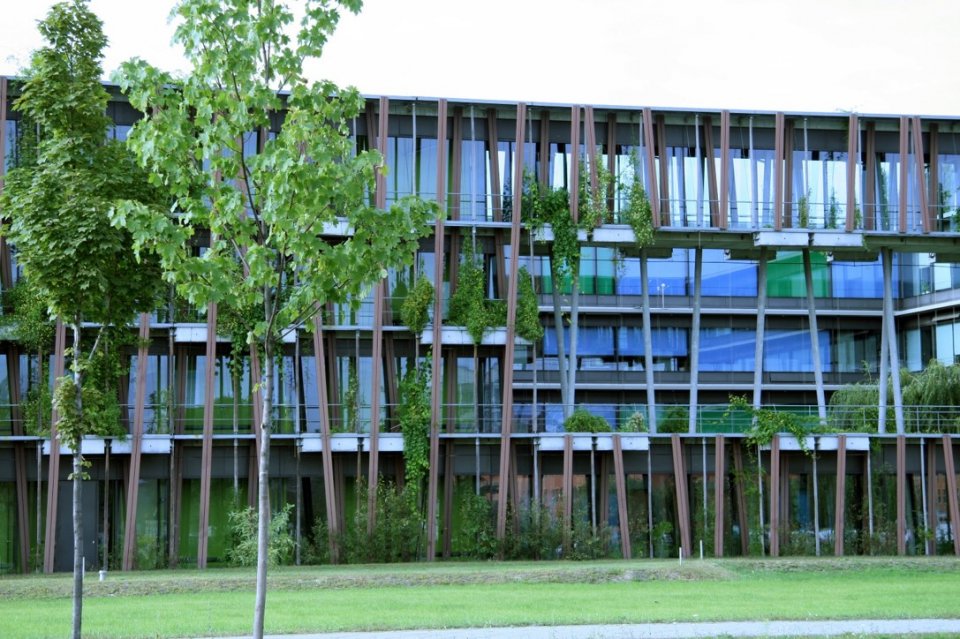
Scale of the project: object (building, etc.)
Scales impacts from this NBS action should be assessed at object (building, etc.) and neighbourhood levels.
Urban density in which the NBS is implemented: medium
- Based on concept of decentralised rainwater management, building greening and elements for cooling and ventilation
- To draw up recommendations for optimal and economical management of technical and innovative components regarding sustainable water and energy resources
The building of the Institute of physics of the Humboldt university in Berlin is the result of combining decentralised rainwater management, building greening and elements for cooling and ventilation. All necessary factors, like water and energy consumption, temperature, radiation, etc., are monitored, evaluated, optimised and documented to gain information about basic conditions for the longterm implementation and further development of innovative and economic technologies. This project gives needed information about benefits of façade greening. The results and experiences of the concept model were integrated into the “Rainwater Management Concepts – Greening building, cooling buildings – Planning, Construction, Operation and Maintance Guidelines” developed by the Senate for Urban development of the City Berlin.
This project is combined with another environmental friendly solution: rain water cisterns (Renewable energy system)
Process enablers:
Knowledge drivers → Information accessibility → knowledge platforms
Process inhibitors:
Economy barriers → Budget constraints
BUSINESS MODEL:
Business cluster: Technological
Business model: Substitute with renewables and natural processes
Temporal perspective
Expected time for the NBS to become fully effective after its implementation: large (beyond 5 years)
Feedback: unknow
Expected life time of the intervention: more than 30 years
Dates (for project delivered): 2003
Global (estimated) cost of the project: more than 5M€
FINANCIAL MODEL:
Financial cluster: cluster1 public financing
- Objects shapes (1)
- On the ground (1)
- Climber green walls
- Objects shapes (2)
- On the ground (2)
- Vertical structures green walls façades (2)
- Build or attached planter systems (including green balconies)
Kraus , Florian (florian.kraus@green4cities.com)
Company (landscape/architecture agency)
Westbahnstraße 7/6a
Further information
Nature4Cities (https://www.nature4cities.eu/) aims to develop a knowledge diffusion around Nature-Based Solution (NBS) and a decision support platform through new collaborative models.
This project is part of the Nature4Cities's pioneer case studies database, it will feed the observatory, NBS pre-selection and replication tools, gathered into the Geocluster4NBS.
This project was chosen as a pioneer case study for the originality of its design and techniques employed.
Nature4Cities project has received funding from the European Union’s Horizon 2020 research and innovation program under grant agreement No 730468.

